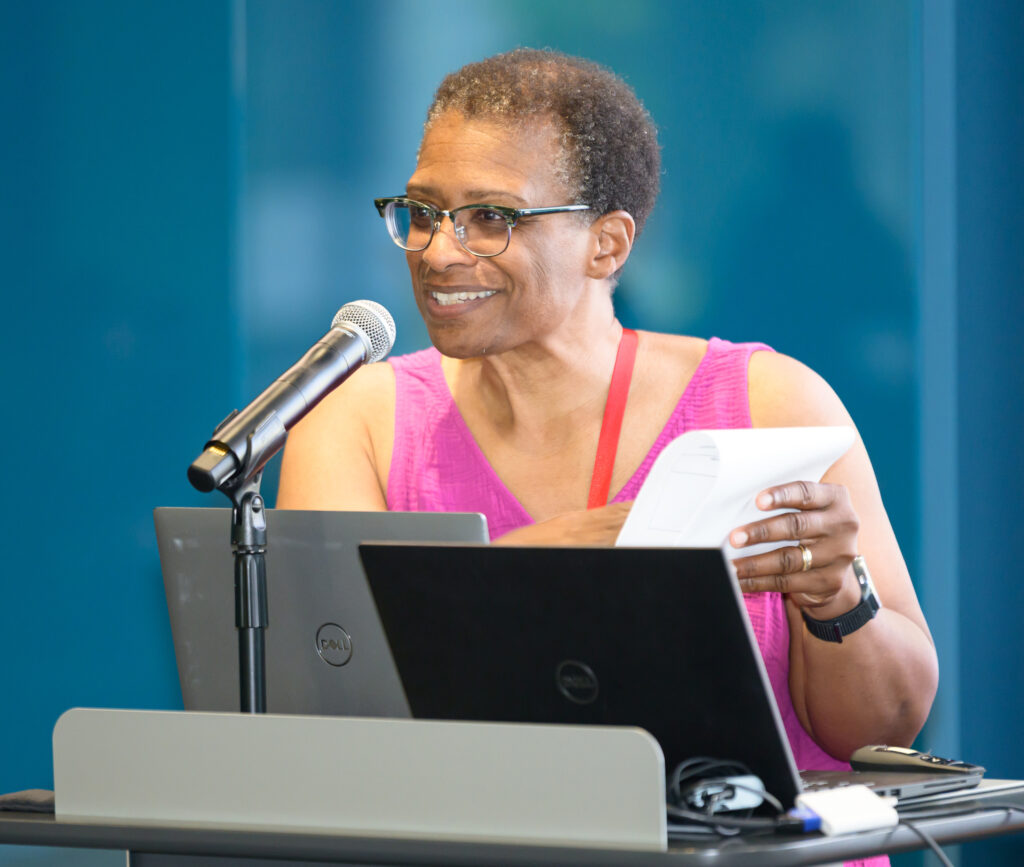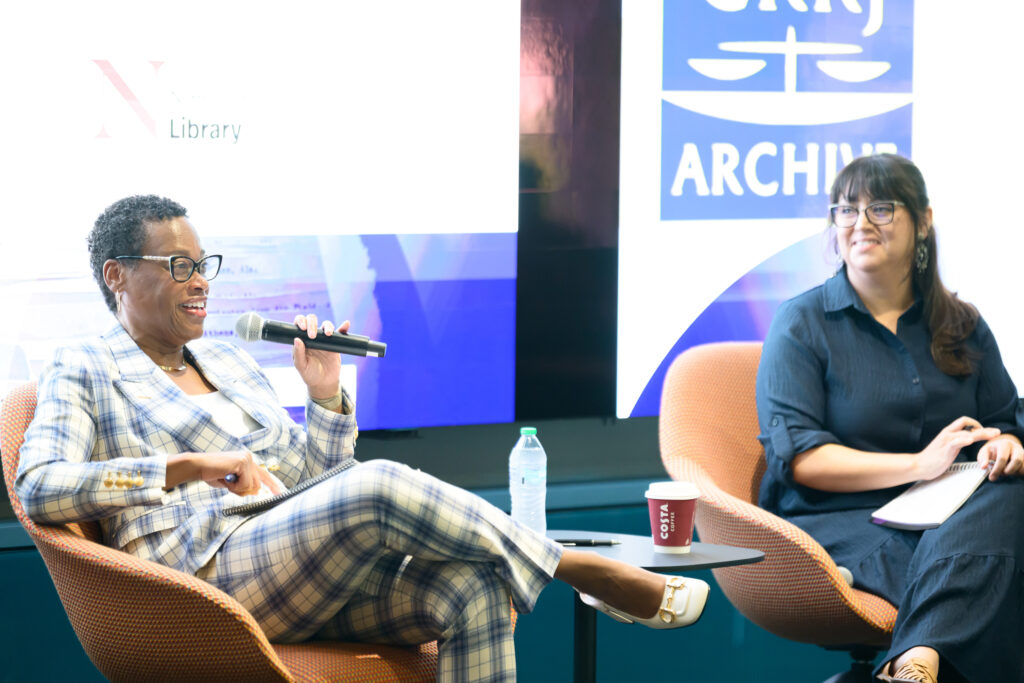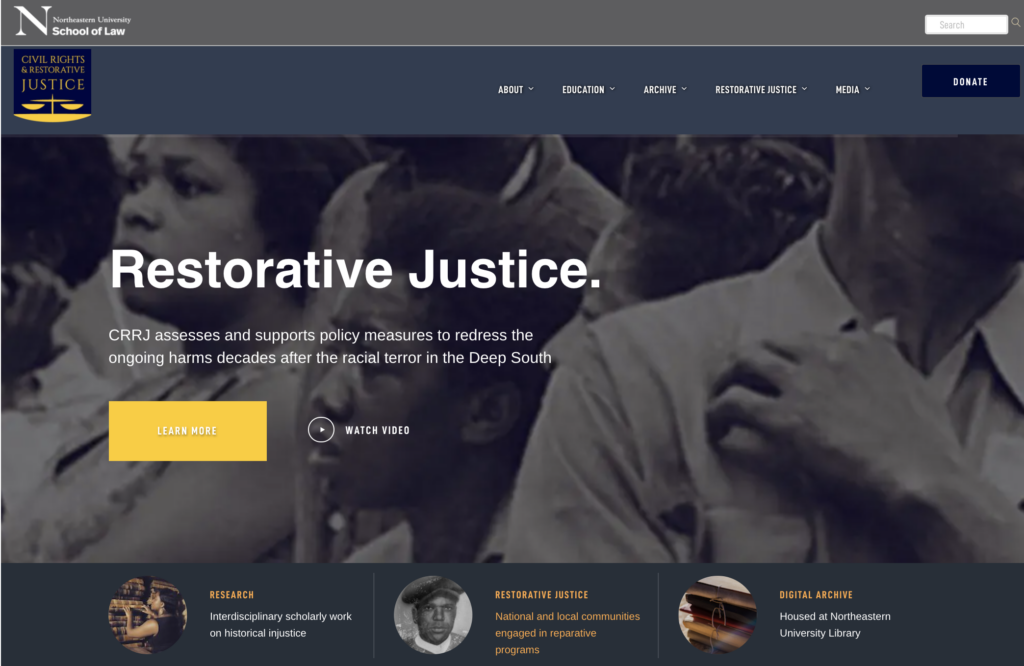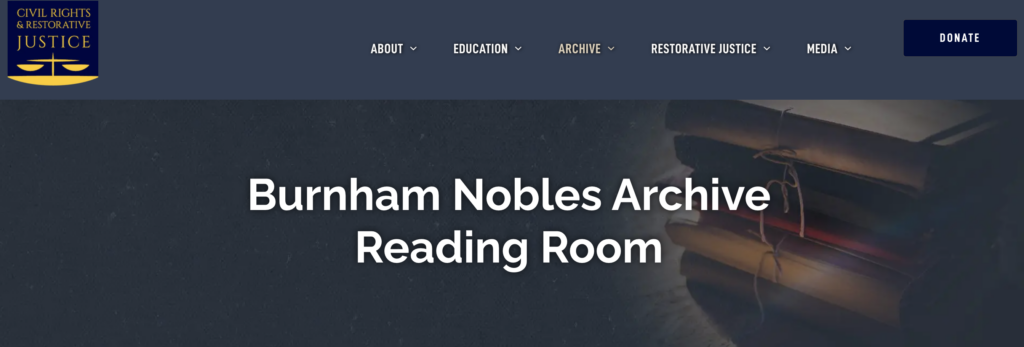Gathering the Red Record: A Two-Day Convening on Linking Racial Violence Archives
Last month, an interdisciplinary group of over 100 archivists, legal professionals, and historians gathered at Northeastern University’s Snell Library for Gathering the Red Record: Linking Racial Violence Archives. Presented by the Civil Rights and Restorative Justice Project (CRRJ) and the Northeastern University Library, the two-day convening served to highlight the Version 2.0 update of the Burnham-Nobles Digital Archive (BNDA), the launch of a new research project, and the development of its first white paper.

The Racial Violence Interoperability White Paper Project will serve as a roadmap exploring the possibility of a national project linking various collections of racial violence into a united, interoperable dataset.
Simultaneously a celebration, a launch, and a call to action, Gathering the Red Record highlighted the newest achievements of the BNDA and asked participants for their input and feedback to design future shared goals.
On the first day of the conference, panelists and attendees were introduced to the extensive expansion of the BNDA and the restorative justice milestones the CRRJ have achieved. Since its initial launch in 2022, the BNDA has established itself as one of the most comprehensive digital records of racially motivated homicides collected to date. The archive serves as an open-source repository and database dedicated to identifying, classifying, and providing documentation on anti-Black killings the mid-20th century South. Version 2.0 introduces 290 new victims to the database, along with their corresponding case files, which resulted in over 5,000 new records becoming publicly available. In addition to a massive expansion in records available, Version 2.0 expands the geographic scope of the archive, adding Maryland, Delaware, Washington D.C., Missouri, West Virginia, Indiana, Kentucky, and Oklahoma to the original 11 formerly Confederate states.

Day two of the event was dedicated to introducing attendees to The Racial Violence Interoperability White Paper Project and asking for feedback, putting researchers, librarians, and archivists who document historical violence into conversation. Participants were given an early draft, which included instructions on how a national digital project might emerge. Developed in collaboration with eight similar ‘sister’ projects, the paper outlines strategies for aligning data dictionaries, establishing governance, securing funding, and ensuring ethical hosting. Participants then divided into working groups to address project planning and data collection, technology alignment, funding and resources, and federal initiatives on cold case records. The day concluded with conference attendees engaging in guided discussions that explored the feasibility of a national project as described in the White Paper.
As the conference finished, participants were left with possibilities for new collaborations, ideas for funding resources, project design suggestions, and digital publishing possibilities. The fruitful discussions also continue to contribute to the White Paper Project, which is scheduled to be finalized in September.

